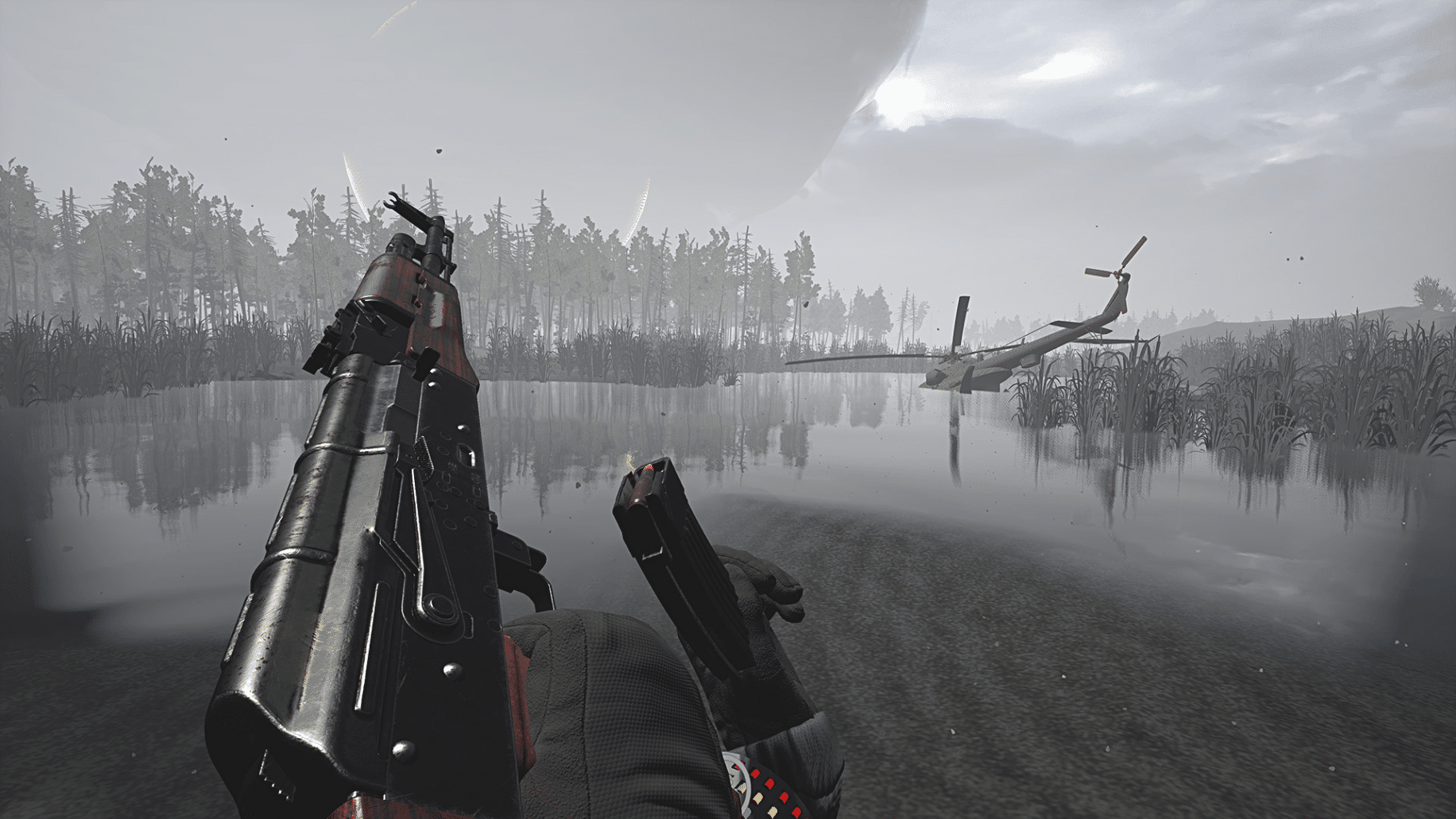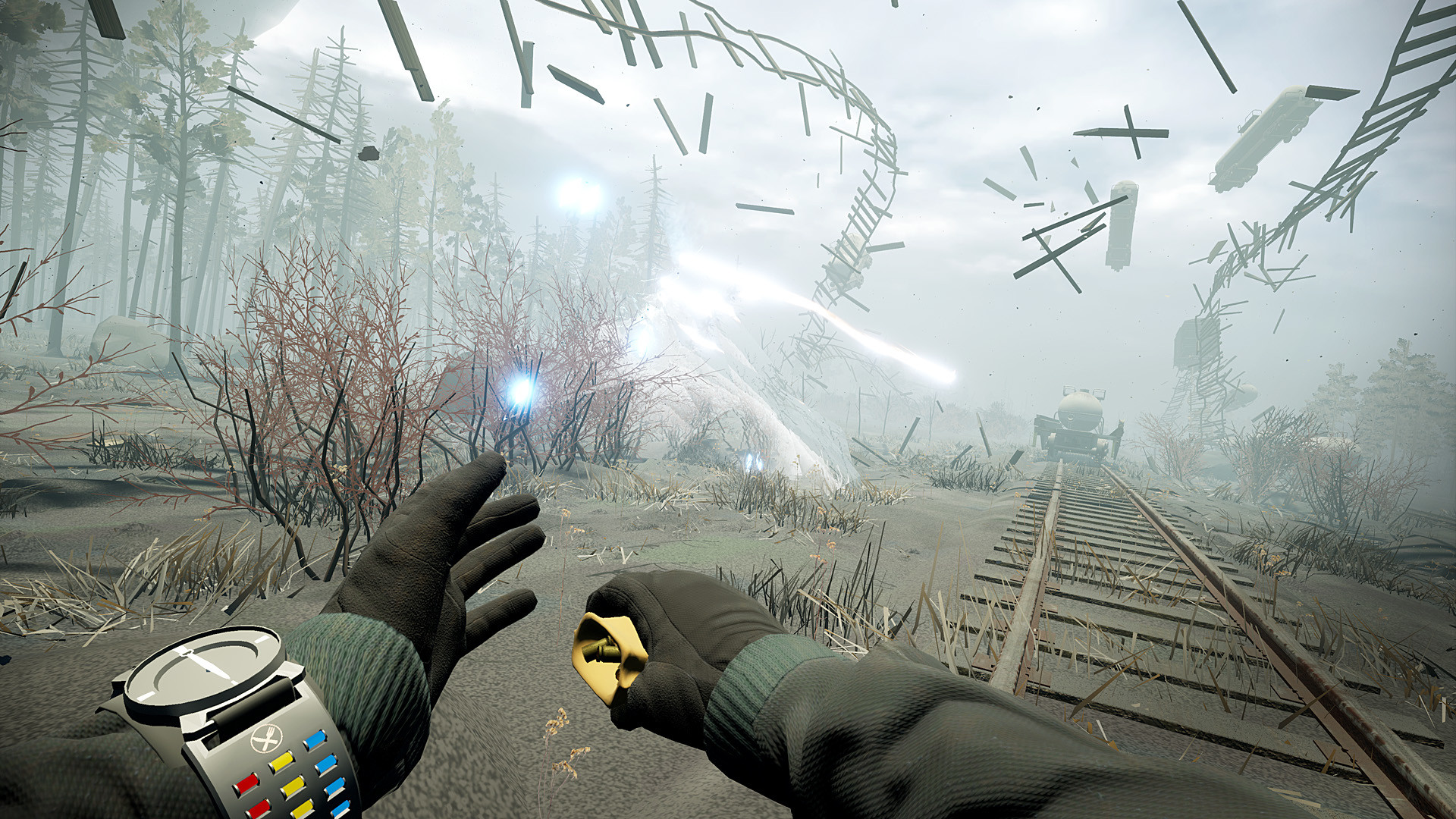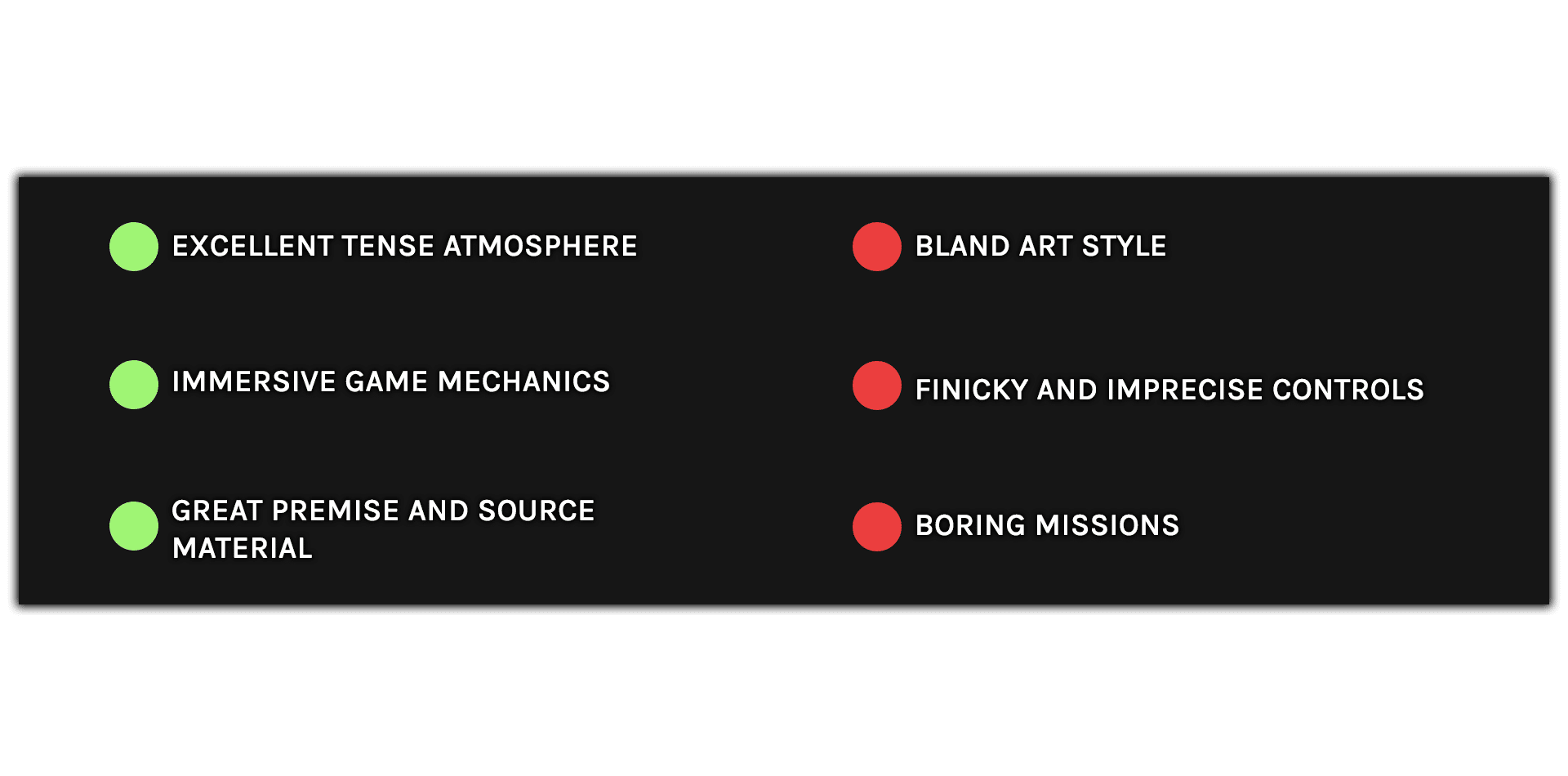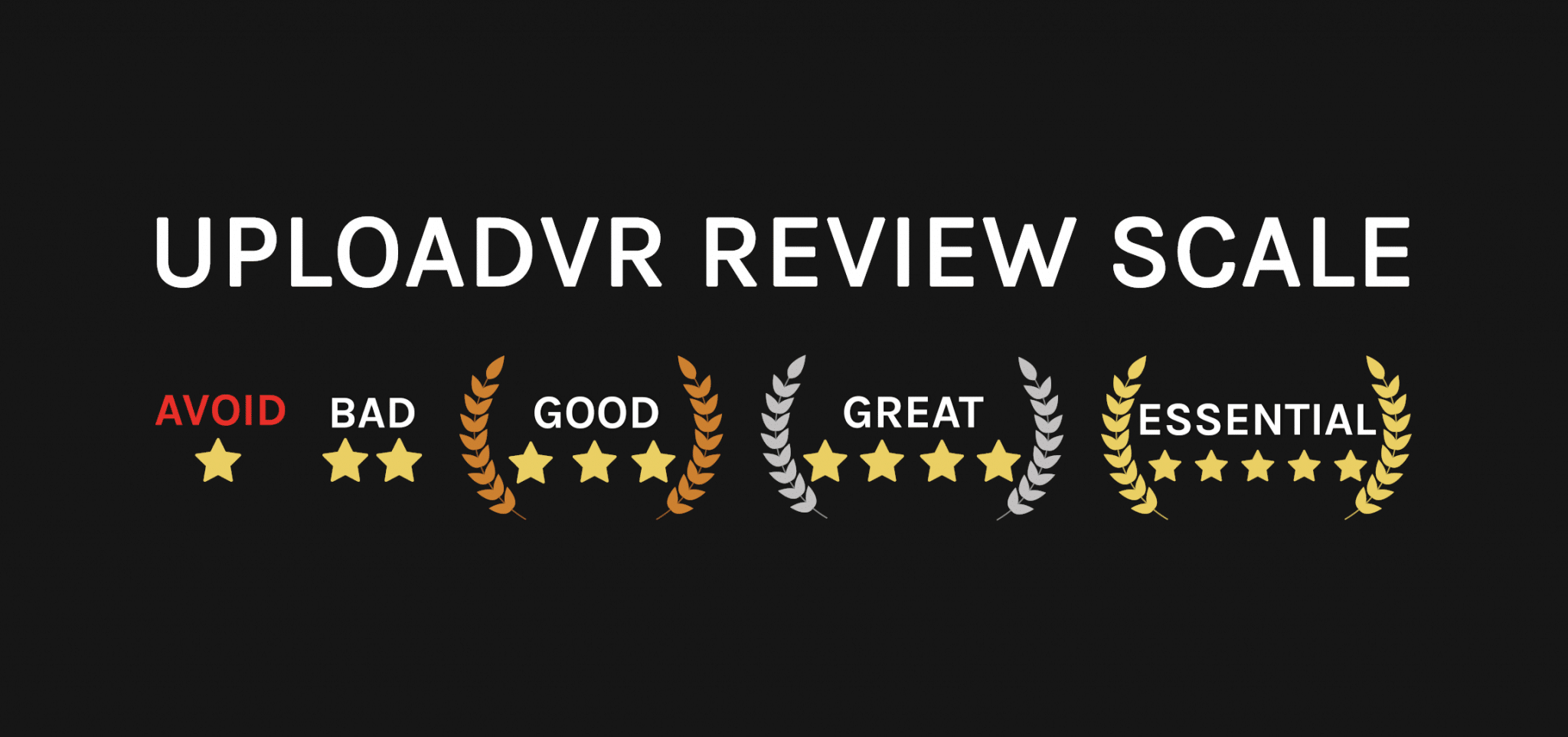Into the Radius is a first-person tense VR survival game with horror undertones that’s set in a semi-open post-apocalyptic world overrun by strange creatures and unexplained anomalies. Read on for our full review and verdict on what we think of this STALKER-inspired VR adventure.
After spending nearly a year in Early Access, Into the Radius from CM Games has emerged from the shadows this week. In Into The Radius, you embark on a surreal journey through the Pechorsk Radius Zone which is overflowing with bizarre phenomena, a moody atmosphere, and dangerous entities. It’s part tense, atmospheric horror game, part first-person shooter, and part methodical survival simulator.
The end result is essentially a VR take on the survival shooter that borrows heavy doses of influence from the GSC series, STALKER which of course stands for: Scavengers, Trespassers, Adventurers, Loners, Killers, Explorers, and Robbers. Those games are founded on the concept that, following a massive nuclear disaster in the mid-80s, the world is falling apart and the floodgates are opened for all manner of individuals to uncover what lies beneath and pick up the pieces.
A lot of modern post-apocalyptic games, such as Fallout 4, or online survival games, like Rust, The Forest, State of Decay, and so on, put heavy emphasis on rebuilding society. That isn’t the case in STALKER or Into The Radius. These games are about opportunity.

It might seem like I’m comparing Into The Radius to STALKER a lot here and that’s entirely intentional because it’s literally like a VR version of that game franchise. In fact, several times, your character is referred to as a stalker because the concept is now so ubiquitous as a term of art. The first line of the ‘About This Game’ description on Steam even says: “Players are sent stalking through…” if that tells you anything about where it got its inspiration.
This isn’t necessarily a bad thing. Many of the best VR games out there are basically, “X but in VR” but it does, by default, result in direct comparisons and raises the bar in terms of expected innovation. For the most part, what Into The Radius delivers is about what you’d expect but it doesn’t knock anything out of the park.
Read More: Dev Q&A – How Into The Radius Combines STALKER And Onward For A Hardcore Post-Apocalyptic Shooter
Into The Radius’ greatest strength is also its greatest weakness: an over-reliance on “realistic” physics interactions. On the one hand, this leads to some absolutely immersive moments. When I’d have to lift myself over a barrier to climb up something, poke my head around corners with a flashlight to see what’s up ahead, and handle my gun with both hands in a way that emulates real life a bit, I was absolutely entrenched in the world. In particular I loved the map. Instead of bringing up a floating 2D menu that just shows you everything, you have to actually look at your environment to figure out where you are and which direction you’re going. Every VR game needs maps like this.
But then the janky feeling that few VR game can avoid shows up to ruin things. While climbing bricks on a wall my arm joints would go crazy and remind me that the headset can only track my hands and not my entire arm. Inexplicably the game wouldn’t realize I’m crouched down in real life completely and suddenly an enemy spots me. I’d try to lift the lid of a weapon box and accidentally fling the box out of the guard tower because it stuck to my hand when I pressed grip. I’d fumble with a weapon because the precision of which part I want to grab when pressing the grip button isn’t precise enough.
And so on, and so on.

These finnicky controls aren’t the sole fault of Into The Radius, many of these issues plague other VR games as well. But when your entire game is predicated off of slow-paced, atmospheric, and realistic traversal of a barren, post-apocalyptic world using realistic tools and weapons it can absolutely sour the experience. I’d find myself battling the game’s mechanics just as often as I did its obscure and mysterious enemies.
Grabbing things is difficult because of how precise you have to point at a distance, handling your inventory felt like fumbling for your keys in the dark, and movement is either way too fast when sprinting or painfully slow when just walking.
Those issues are amplified by a relatively lackluster mission structure that, while improved since Early Access launch, is still a bit repetitive to get through. Voice acting is solid enough, but sporadic and not throughout the game as much as I expected.
All of this being said, I want to stress that the atmosphere and setting are quite excellent, as derivative as they may be. There is a real, palpable sense of tension everywhere you go even if it doesn’t look near as good in the headset as it does in screenshots. Ghostly enemies emit the most terrifying noises the closer they get and the anomalies explode with angry screeching that’s extremely unsettling. Surprisingly, Into the Radius manages to feel more tense and stressful than many dedicated horror games can muster.
Into The Radius Review Final Impressions
Despite its flaws and unpolished nature, Into the Radius is still a good VR game worth playing if you’re a fan of the setting or looking for something dense to dig into. You can easily get upwards of 15 hours of content out of this game and the developers seem eager to continue working on it. Janky controls and some odd design decisions do not nullify the quality of the setting or the game’s underlying ideas. At its core, Into the Radius is an immersive and ambitious survival shooter on the fringe of humanity that pushes you to your limits.


Into The Radius is available now on Steam with support for all major PC VR headsets including Rift, Vive, Index, and Windows MR for $29.99. This review is based off the Steam version primarily using an Oculus Rift S as well as an Oculus Quest via Virtual Desktop.
For more on how we arrived at this score, read our review guidelines. Agree or disagree with our Into The Radius review? Let us know in the comments below!



























